In the museum world, the new year offers a lot to be excited about. For starters, the Smithsonian Institution will be rolling out an impressive lineup of exhibitions: the Smithsonian Design Museum is hosting the first major museum exhibit exploring contemporary Muslim fashions, the Smithsonian American Art Museum is looking at how 19th century naturalist Alexander von Humboldt shaped Americans’ view of nature, the National Museum of Natural History will be showcasing artists who are reflecting on the anthropocene, and the National Portrait Gallery is staging a stunning show of John Singer Sargent’s charcoal portraits of trailblazers in the arts and another celebrating women writers of the past 100 years. The Smithsonian's National Museum of American History, meanwhile, has declared 2020 “Year of the Woman,” with upcoming exhibitions on women’s suffrage, the history of girlhood and women inventors.
Beyond the Smithsonian, if all goes accordingly, 2020 will be a year of much-anticipated museum openings—from a Grand Egyptian Museum that’s been nearly two decades in the making, to a historic D.C. building transformed into an interactive hub exalting the powers of words and language. So whether you’re looking to delve into the world of artificial intelligence, or learn more about Harriet Tubman, coral reef conservation, Olympic history, African American music, and more, these ten museums promise to enlighten, entertain and offer you entirely new ways of experiencing these subjects.
Grand Egyptian Museum, Giza, Egypt

Patrons have been waiting patiently for the opening of the Grand Egyptian Museum (as for just how long, former Egyptian President Hosni Mubarak laid its foundation's first stone back in 2002), but if all goes accordingly 2020 will finally be their year. Rising up from a desert plateau between Cairo and the Giza pyramids, what's slated to be the planet's largest archeological museum should be equally as impressive both inside and out—with its 2,000-foot-tall translucent stone facade and a colossal statue of Ramses II greeting visitors arriving into GEM's sun-filled atrium entry. The complex will feature thematic gardens to explore, a 3-D cinema, an interactive children's museum, and more than 100,000 artifacts showcasing Egyptian history from pre-historic to present day. Still the museum's pièce de résistance is undoubtedly its cache of more than 5,000 objects from the excavation of King Tut's tomb—the most substantial such public collection of the boy king's royal possessions ever in one place—including both his golden throne and funerary mask.
The MassArt Art Museum, Boston, Massachusetts
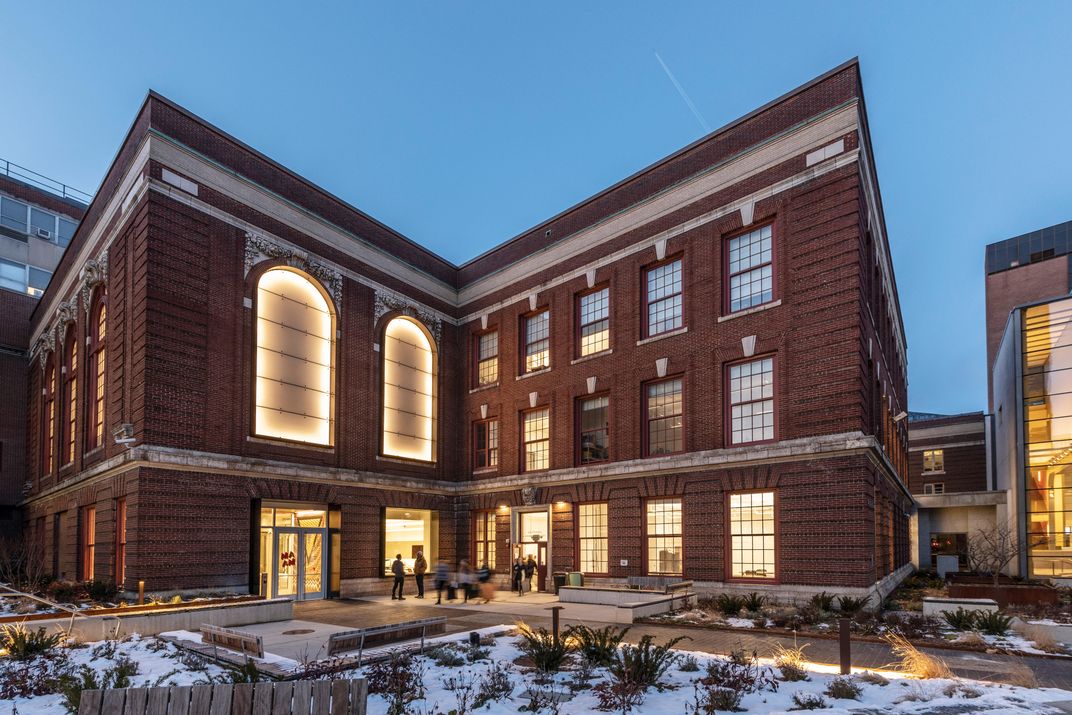
Housed in what was formerly the Bakalar and Paine Galleries on the campus of Boston's publicly funded Massachusetts College of Art and Design (MassArt), the free MassArt Art Museum will bring a global selection of contemporary artworks—everything from sculptures incorporating cotton crochet, inflatables and LED lights to interactive pixel-art installations—to visitors when it opens this February. MAAM is what's known as a kunsthalle, meaning it will have no permanent collection on display, though its trio of initial exhibits demonstrates exactly the kinds of imaginative works by both emerging and renowned visionary artists museumgoers can expect. These include “Game Changers,” a group exhibit exploring the point where video games and contemporary art merge, and the site-specific Valkyrie Mumbet, a colorful, large-scale multimedia piece by celebrated Portuguese artist Joana Vasconcelos that honors former Massachusetts slave Elizabeth “Mumbet” Freeman and her winning fight for freedom.
The National Museum of African American Music, Nashville, Tennessee

Scheduled to open this summer, the National Museum of African American Music will be the first ever museum dedicated entirely to African American musicians and the more than 50 different music genres and styles they have inspired, created and influenced. The 56,000-square-foot facility—located at 5th and Broadway on the site of the city's former convention center—offers a walk through this history, with more than 1,400 artifacts. Instruments, posters and clothing worn by artists like Nat King Cole and Whitney Houston spread among stand-alone galleries—each one dedicated to a distinct musical genre. For example, “A Love Supreme: Harlem Renaissance and the Emergence of Jazz” tells the story of jazz through styles like swing, fusion and bebop, while “The Message: The Story of Hip Hop in Post Civil Rights Movement America” emphasizes the role that beatbox work played in the birth of rap and hip hop. The museum's also home to the 200-seat Roots Theater and an onsite research library.
Museum of the Future, Dubai, United Arab Emirates
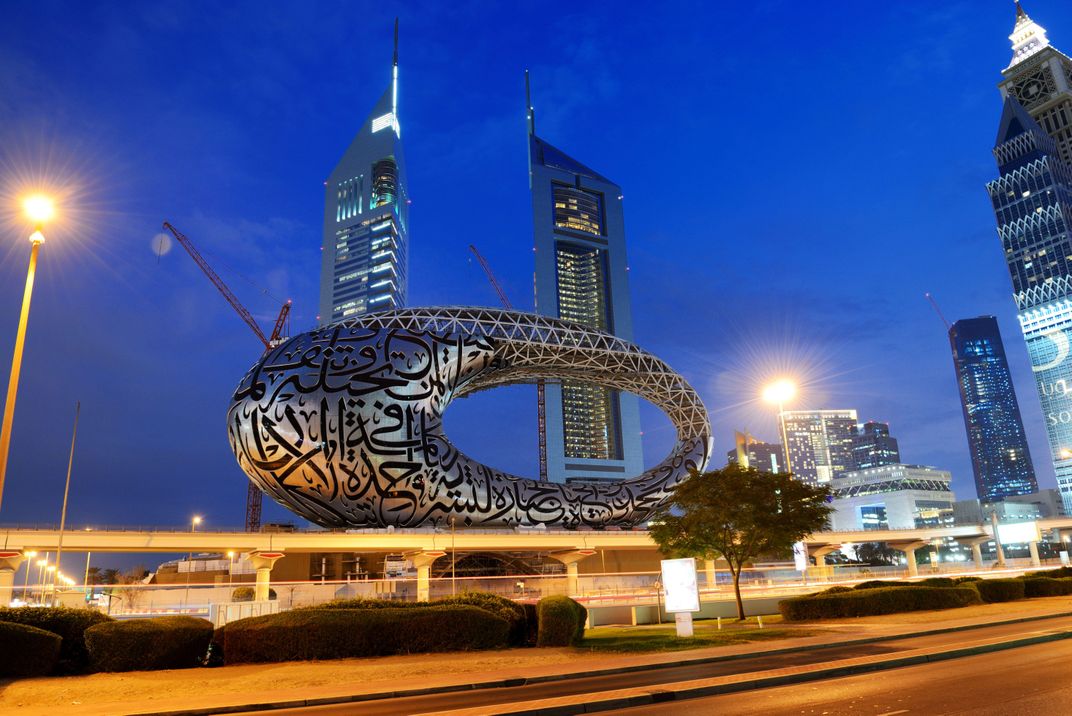
Integrating itself seamlessly into Dubai's ultra-modern landscape, the stainless steel, torus-shaped, calligraphy-covered Museum of the Future will offer an interactive and immersive look into timely topics from food security and climate change, to ways A.I. could help everyday people manage their money or run at superhuman speeds. The museum, opening in the fall, is a project of the UAE's Vice President and Prime Minister Sheikh Mohammed bin Rashid Al Maktoum and his Dubai Future Foundation, which aims to help thoughtfully shape the future through technological innovations. It incorporates themes initially created for Dubai's World Government Summit for global change, which has been taking place annually since 2013— including the 2017 theme “Climate Change and Food Security,” brought to life in 3-D printed seeds and food, and 2018’s “A.I. and Happiness,” showcasing possible advancements such as robotic caretakers for the elderly. Visitors will be able to become part of the museum experience, with many of the exhibits incorporating theatrical elements that make them seem more like immersive attractions: think Epcot Center's Future World (which is currently undergoing its own transformation) , but with researchers exploring real-time ideas onsite.
The Planet Word Museum, Washington D.C.
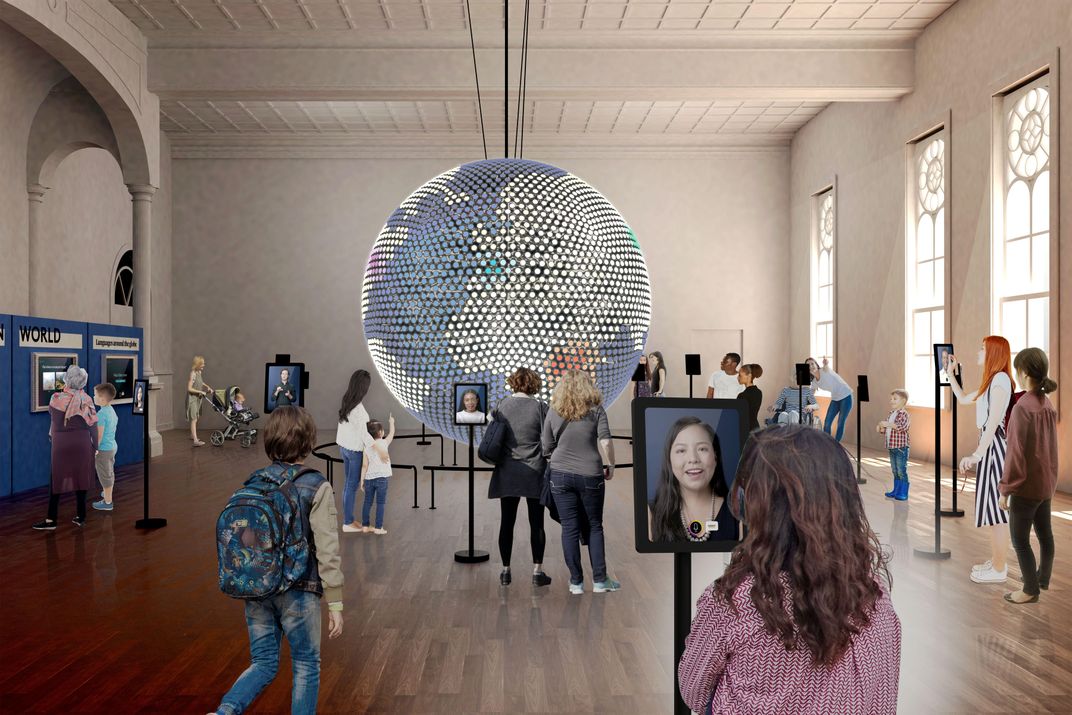
Housed within the historic Franklin School, the site where Alexander Graham Bell first successfully transmitted speech by a beam of light in 1880, Washington, D.C.’s 51,000-square-foot Planet Word Museum, opening May 31, will be filled with interactive exhibits activated through words spoken, written and signed. Enter a magical library of artisan-made, book-inspired dioramas that spring to life as you read out-loud, then explore a gallery where you can learn elements of Zulu, Navajo and Iranian Sign Language through on-screen word ambassadors in their native tongues. The museum will have a room where you can “paint” with words using high-tech brushes, and another in which you can create your own marketing campaign. Planet Word will also host workshops in skills like songwriting and storytelling, highlighting the fact that your voice matters.
National Museum of the United States Army, Belvoir, Virginia
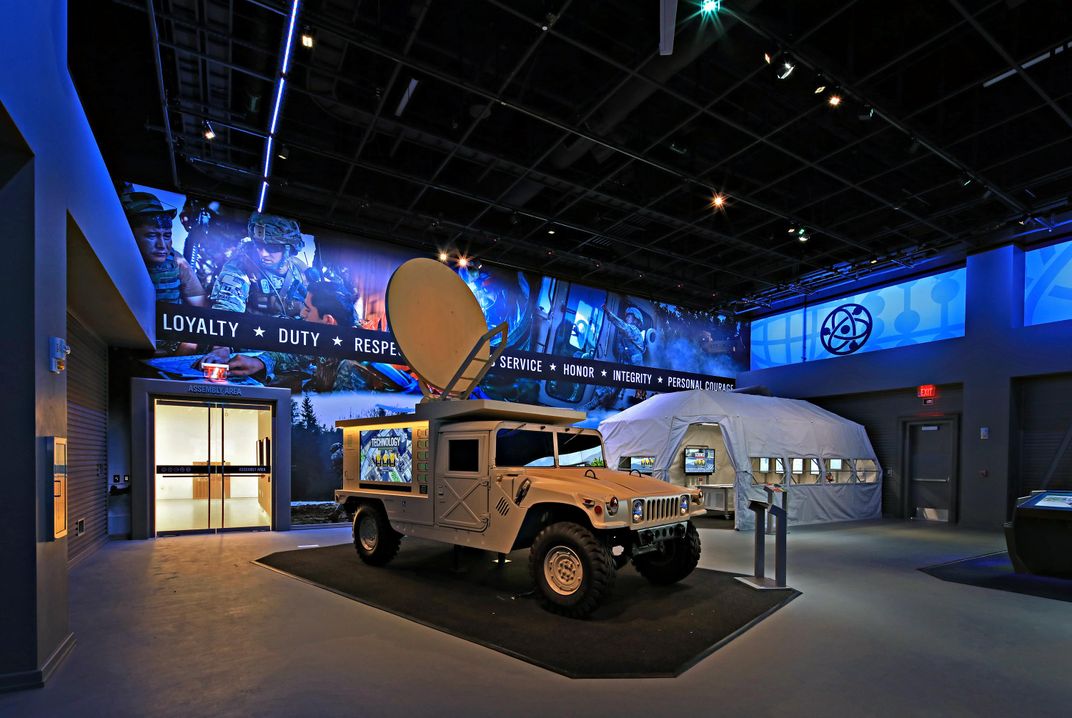
Located on the grounds of Fort Belvoir—a U.S. army installation about 20 miles south of Washington, D.C. that employees nearly twice as many workers as the Pentagon—the National Museum of the United States Army will be the country's first museum dedicated to providing a comprehensive look into more than 240 years of Army service and history when it opens this June. Visitors arriving at the 185,000-square-foot space facility (a free-to-enter joint project between the U. S. Army and the non-profit organization, The Army Historical Foundation) will have an opportunity to peruse tens of thousands of Army-related works, from artifacts and documents related to the branch's scientific and tech innovations to works of art portraying historic battles and the everyday lives of soldiers. The museum will feature three main galleries, including one devoted to soldiers' own stories, as well as an Experimental Learning Center, where visitors can participate in digital, hands-on activities like pinpointing the coordinates of 'lost' soldiers through a series of map overlays and using computer modeling to learn how diseases spread and ways to contain them. Outside you'll find a memorial garden, amphitheater and parade grounds for larger events.
Museum of Underwater Art, Queensland, Australia
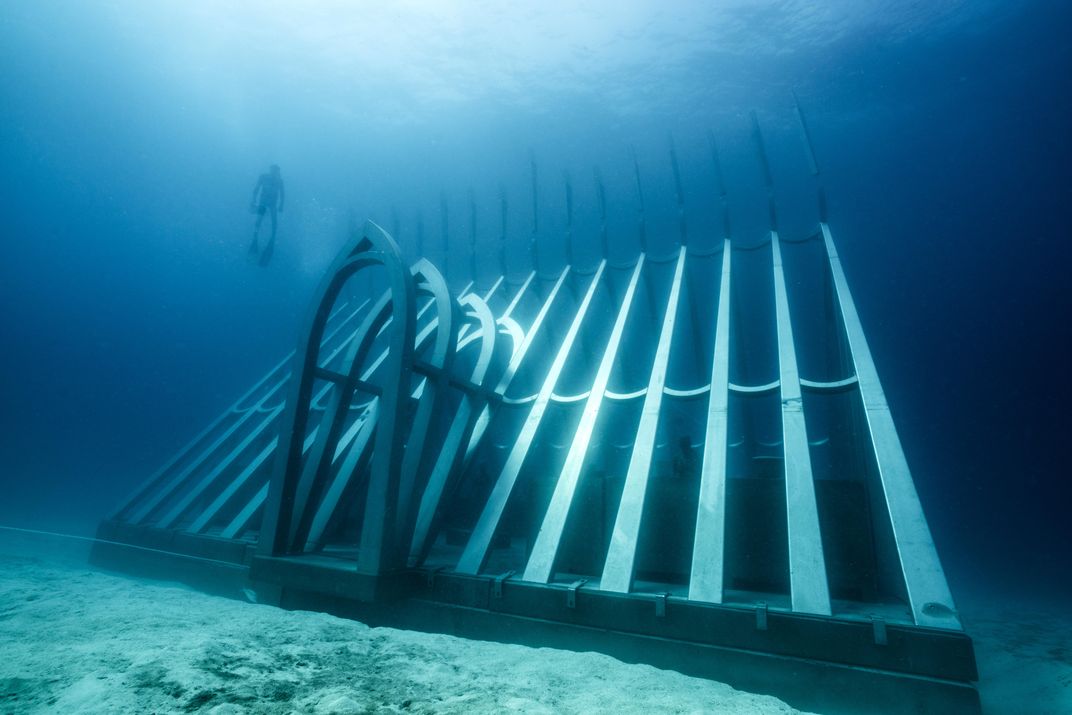
The brainchild of underwater sculptor Jason deCaires Taylor, who created the world's first ever underwater sculpture park in the Caribbean in 2006, MOUA is a multi-part series of both submerged and partially above-water art installations that aims to shed light on the devastating effects of climate change on Australia's Great Barrier Reef, as well as serve as an inspiration for ocean conservation and help with reef recovery. The nonprofit's four “exhibits” will be spread off the coast of Townsville, a gateway in northeastern Australia to the Great Barrier Reef. “Ocean Siren” is a 16-foot-tall sculpture of an indigenous girl that rises above low-tide waters about 100 feet off of Townsville, and turns a darker red color as surrounding ocean temperatures—transmitted directly from a local reef weather station—increase. Another is the diver-accessible “Coral Greenhouse” about 59-feet underwater at the Greater Barrier Reef Marine Park's John Brewer Reef, which consists of 20-plus stainless steel and marine-grade cement sculptures housed within a coral-encrusted skeletal frame. The installation was created to generate a new marine ecosystem while simultaneously welcoming visitors. Taylor is consulting with the local indigenous community on nearby Palm Island to install a third, tour-accessible MOUA exhibit in its waters by August, and he is planning a fourth for Magnetic Island's Geoffrey Bay dedicated to reef science.
Harriet Tubman Museum, Cape May, New Jersey
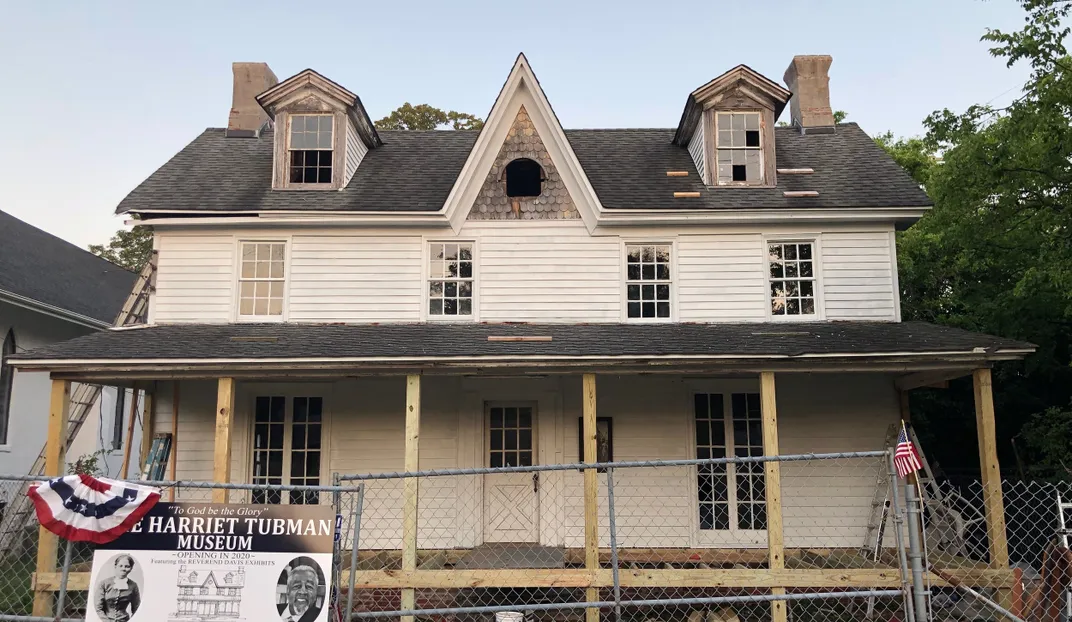
Although she was born in Maryland, American abolitionist, women's suffrage activist and Civil War scout and spy Harriet Tubman spent the summer of 1852 in Cape May, New Jersey, raising funds for her Underground Railroad operations. Tubman used the money she earned here to help carry out her rescues, which included approximately 70 enslaved laborers. This June, the seaside community will be opening a museum highlighting Tubman's life and role in the Underground Railroad, as well as its own notable part in the greater abolitionist movement. (Wealthy entrepreneur and abolitionist Stephen Smith was the founder of Cape May’s AME Church, and next to his former home once stood the Banneker House Hotel, where members of the Vigilante Committee of Philadelphia, who organized the Underground Railroad, once stayed. The county itself was also reputedly part of the Railroad’s “path” along the eastern seaboard in which the formerly enslaved made their way northward.) Situated on the first floor of Cape May's pre-Victorian era Howell House, which is owned by the neighboring Macedonia Baptist Church, the Harriet Tubman Museum will showcase objects relating to both Tubman and the Underground Railroad—including a signed first-edition printing of the 1872 book, The Underground Railroad Records, by abolitionist leader William Still, and African art pieces once belonging to the church's deceased pastor, Rev. Robert Davis—along with a display of works by local African American artists. Its official opening is scheduled for Juneteenth (June 19), a day that commemorates the end of slavery in the United States.
The Academy Museum of Motion Pictures, Los Angeles, California

Much like the museum in Egypt, the Academy Museum of Motion Pictures has pushed back its premiere date a number of times, but the wait should be worthwhile if and when organizers finally roll out the red carpet in 2020. This 300,000-square-foot space dedicated to the art, science, history and culture of film draws on the Academy's own impressive collection of movie-making and film-related memorabilia, from the toothy extraterrestrial headpiece made for the 1979 sci-fi thriller Alien to an original Cinerama camera, the wide-angle precursor to IMAX. Step inside the visual culture of black cinema with “Regeneration,” the museum's second temporary exhibition that will follow closely after a retrospective of filmmaker Hayao Miyazaki; participate in Q&As with established filmmakers at the museum's 1,000-seat David Geffen Theater; and get an up-close view of the only surviving (and fully restored) shark mold from Jaws.
U.S. Olympic & Paralympic Museum, Colorado Springs, Colorado

Colorado Springs gained the official moniker, “Olympic City,” back in 2016, and it's one that's entirely fitting: This mountain city is already home to both the U.S. Olympic Committee and U.S. Olympic Training Center, and this spring will be the new home of the U.S. Olympic and Paralympic Museum, a 60,000-square-foot, state-of-the-art facility highlighting the amazing stories and abilities of all Team USA athletes. Everything about the museum is meant to inspire: from its flowing, athlete-inspired exterior to the impressive accessibility of its exhibits, which use video captions and audio description tracks to make them inclusive for all visitors. Participate in simulated sports training from skiing to ice hockey, hear personal stories told by medal-winning swimmers and figure skaters, and see the final scoreboard from the 1980 “Miracle on Ice,” one of the most iconic moments in U.S. Olympic history. The museum is also home to impressive collections of Olympic medals and torches: 48 of them all together, including the Atlanta 1996 Olympic Games Torch, which traveled aboard the space shuttle Columbia as part of its relay.
Planning Your Next Trip?
Explore great travel deals
Smithsonian magazine participates in affiliate link advertising programs. If you purchase an item through these links, we receive a commission.
/https://tf-cmsv2-smithsonianmag-media.s3.amazonaws.com/filer/b0/a6/b0a60f82-1a95-4a92-ac14-1e67fc791e6f/academy_museum_mobile.jpg)
/https://tf-cmsv2-smithsonianmag-media.s3.amazonaws.com/filer/cd/54/cd5498fa-7663-4b98-ad17-94655858b20e/academy_museum_social.jpg)
/https://tf-cmsv2-smithsonianmag-media.s3.amazonaws.com/accounts/headshot/LauraKiniry.png)
/https://tf-cmsv2-smithsonianmag-media.s3.amazonaws.com/accounts/headshot/LauraKiniry.png)